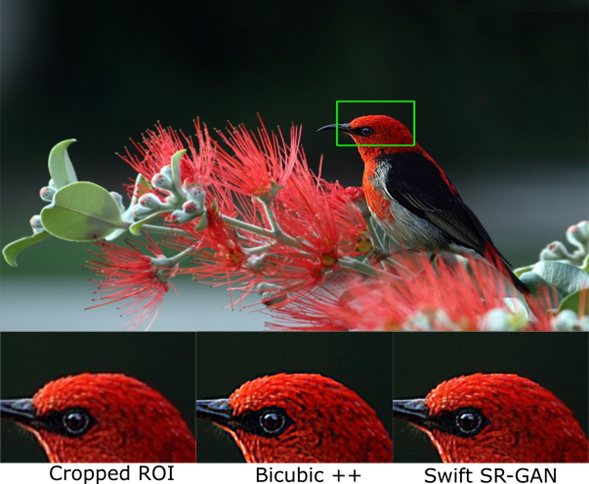Dynamic Zoom - Real-time Video Resolution Enhancement

Dynamic Zoom is an advanced super-resolution project I had the opportunity to contribute to, focusing on real-time video resolution enhancement. My primary role was implementing the upscaling process using Bicubic++, a deep learning model optimized for low latency, and ensuring that the output was displayed in “real-time” alongside the original video. This experience allowed me to bridge the gap between theoretical computer vision concepts and practical implementation, significantly expanding my knowledge in video processing pipelines.
For more technical details, implementation, and the complete code, explore the GitHub Repository and the official Dynamic Zoom Website.
Project Overview and Motivation
In digital media and real-time applications such as sports analysis, augmented reality, and surveillance, maintaining video quality during zoom operations is essential. Traditional digital zoom methods suffer from quality degradation, resulting in blurred or pixelated images. Dynamic Zoom addresses these challenges by employing super-resolution techniques, enhancing visual clarity and preserving detail even during intensive zooming.
Technical Focus
My focus within the project was on optimizing the Bicubic++ model for real-time applications, minimizing latency while maintaining high-quality outputs. Specifically, I concentrated on:
- Reducing Inference Latency: Achieved inference speeds of approximately 7-8 ms per frame for 720p to 4K upscaling, ensuring the enhanced video displayed seamlessly without lag.
- Integrating Efficient Pipelines: Structured the video processing pipeline using PyTorch and CUDA, optimizing memory management and data handling for smoother processing across large video datasets.
- Real-Time Visualization: Developed mechanisms to visualize enhanced frames in parallel with the original video stream, making it possible to view the upscaled content in real time.
Pipeline Architecture
The system was built around a modular architecture to ensure high performance and scalability:
- InputStream: Captured video frames, allowing for real-time ROI (Region of Interest) detection and resizing.
- FrameBuffer: Buffered video frames to ensure smooth and parallel processing.
- ModelExecutor: Implemented the optimized Bicubic++ model for rapid upscaling of the frames.
- OutputStream: Rendered the enhanced frames in sync with the original video stream, providing a side-by-side comparison.
This pipeline architecture not only reduced latency but also maximized GPU utilization, making it possible to handle high-resolution video streams efficiently.
Key Results
The efforts to optimize the upscaling process yielded impressive results:
- High-Quality Output: The enhanced video maintained sharpness and detail even at high zoom levels.
- Minimal Latency: Achieved real-time processing speeds of 7-8 ms per frame for 720p to 4K upscaling.
- Scalable Performance: The pipeline structure allowed for easy scalability across different hardware configurations.
Learning Experience and Future Work
This project allowed me to apply my computer vision and deep learning knowledge to a real-world problem, gaining hands-on experience with super-resolution techniques and efficient video processing pipelines. The next steps would involve incorporating temporal-aware models to handle motion more effectively and reducing compression artifacts in lower-quality video inputs.
Conclusion
Dynamic Zoom represents a significant advancement in real-time video processing, providing an effective solution to video quality degradation during digital zoom. My contributions to optimizing the upscaling process helped achieve real-time performance without compromising on quality, making this project a rewarding application of advanced computer vision techniques.
For a detailed walkthrough and implementation guide, check out the GitHub Repository and visit the official Dynamic Zoom Website.